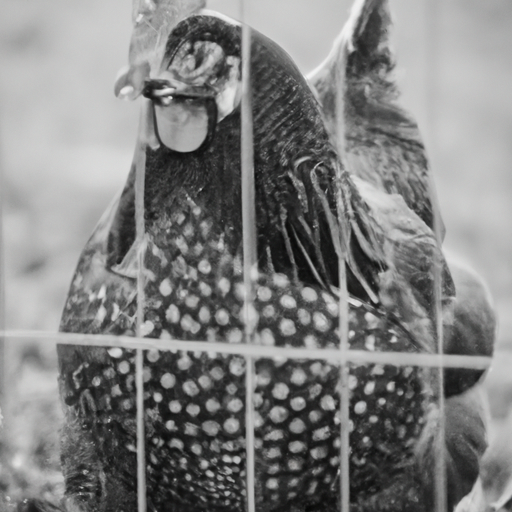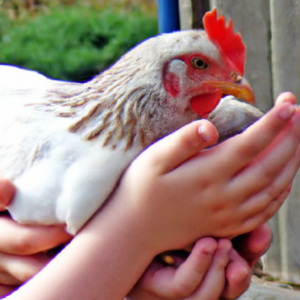
Imagine having a flock of chickens that willingly and effortlessly use their designated roosts in the coop, allowing for easy maintenance and a stress-free environment. Have you ever wondered if it’s possible to train chickens to use specific roosts? In this article, we’ll explore the potential of training chickens to take up specific spots in the coop, providing insights and tips on how to encourage your feathered friends to make roosting a breeze. Say goodbye to the chaos of roosting roulette and say hello to a well-organized and harmonious chicken coop experience.
The Importance of Roosts in Chicken Coops
Providing a Safe and Comfortable Resting Place
Having appropriate roosts in a chicken coop is essential for providing chickens with a safe and comfortable resting place. Roosts give chickens a dedicated spot where they can perch and sleep, away from potential predators or hazards on the ground. By providing a raised roosting area, you are ensuring that your chickens can rest without fear of danger lurking below. Additionally, roosts with a smooth surface help prevent foot injuries, as chickens are less likely to develop bumblefoot or other foot problems when perching on a suitable material.
Encouraging Natural Behavior
Roosts also play a crucial role in encouraging natural behavior among chickens. In the wild, chickens naturally seek out elevated roosting spots to sleep, away from predators. By providing a roosting area in the coop, you are allowing your chickens to fulfill their instinctive need for a higher perch to rest on. A suitable roosting environment helps chickens feel more secure, allowing them to exhibit their natural behavior within the safety of the coop.
Promoting Hierarchy and Social Order
Roosts can also play a significant role in establishing and maintaining hierarchy and social order within a flock. Chickens have a natural inclination to establish a pecking order, where dominant individuals assert their dominance over others. Providing multiple roosting spots at varying heights gives chickens the opportunity to establish their position within the flock based on their preference for higher or lower perches. This promotes a more harmonious social structure, minimizing aggression and stress among the chickens.
Understanding Chicken Behavior
The Instinct to Roost
Chickens are born with a natural instinct to roost. In the wild, they seek out sturdy tree branches or other elevated surfaces to sleep on, ensuring their safety from predators on the ground. Even domesticated chickens retain this instinct, and providing suitable roosting options in the coop helps fulfill this innate need. Roosting not only provides chickens with a safe place to rest but also allows them to feel secure, reducing stress levels and promoting overall well-being.
Hierarchy and Pecking Order
Chickens are hierarchical animals, and establishing a clear pecking order is an essential part of their social dynamics. Roosting spots can play a significant role in determining a chicken’s position within the flock hierarchy. Dominant chickens often prefer higher perches, while more submissive individuals may opt for lower ones. By providing a range of roosting options, you allow chickens to establish their place within the pecking order naturally.
Conditioning and Training
While chickens have a natural inclination to roost, there may be instances where they need some guidance or training to understand specific roosting areas within the coop. Conditioning chickens to use specific roosts involves consistent repetition and positive reinforcement. By creating an environment that encourages chickens to use particular roosts, you can train them to understand and follow your desired roosting behavior.
Creating a Suitable Roosting Environment
Choosing the Right Roosting Material
When selecting roosts for your chickens, it’s essential to choose the right materials that offer both comfort and safety. Opt for materials that have a smooth and rounded surface, such as wooden dowels or branches of appropriate size. Avoid materials with sharp edges or rough textures that could cause foot injuries. Offering a variety of roosting materials can also provide enrichment for your chickens, as they can choose their preferred perch based on personal comfort.
Appropriate Roosting Height and Size
The height and size of roosts are critical factors to consider when creating a suitable roosting environment. Chickens prefer higher perches, so aim to provide roosts that are at least two feet off the ground. Adequate spacing between roosts is also important, allowing chickens to comfortably perch without overcrowding. Each bird should have a minimum of 8-10 inches of roosting space to ensure they can spread their wings and maintain balance while sleeping.
Ensuring Adequate Ventilation
Proper ventilation is crucial in a chicken coop, including the roosting area. Adequate airflow helps prevent the accumulation of bacteria and moisture, reducing the risk of respiratory issues or frostbite. When designing or selecting a coop, ensure that the roosting area allows for sufficient ventilation without exposing chickens to drafts or extreme temperatures. A well-ventilated roosting environment contributes to the overall health and well-being of your flock.
Methods for Training Chickens to Use Specific Roosts
Repetition and Consistency
Training chickens to use specific roosts requires repetition and consistency. Start by placing your chickens on the desired roosts every evening before they settle in for the night. Gently guide them onto the roosts, making sure they stay there until it becomes their routine. Repeat this process every evening, reinforcing the desired behavior. Consistency is key in training chickens, so maintaining a routine will help them understand and adapt to the specific roosting area.
Positive Reinforcement
Positive reinforcement is a vital tool when training chickens to use specific roosts. Offer treats or rewards to chickens that voluntarily choose the designated roosts. By associating the desired roosting behavior with something positive, such as a favorite treat, chickens are more likely to repeat the behavior in the future. Be patient and consistent with the rewards, gradually reducing the frequency as the chickens become accustomed to the desired roosting area.
Guiding Roost Selection
To guide chickens towards specific roosts, you can make the desired roosting area more attractive and appealing to them. Place extra bedding or nesting material on the designated roosts, creating a comfortable and inviting perch. Keeping the area clean and free of droppings will also encourage chickens to choose those roosts. Additionally, positioning the desired roosts at higher levels or near windows can entice chickens to explore and eventually use those roosts.
FAQs about Chickens Using Specific Roosts
How long does it take to train chickens to use specific roosts?
The time it takes to train chickens to use specific roosts can vary depending on the individual and the flock dynamics. It can take anywhere from a few days to a few weeks of consistent training for chickens to understand and use the designated roosts consistently. Remember to be patient and persistent, as each chicken may have a different learning pace.
Can all chicken breeds be trained to use specific roosts?
Yes, all chicken breeds can be trained to use specific roosts. While some breeds may have individual preferences for perch height or material, with proper training and conditioning, any chicken can learn to use the designated roosting area. Pay attention to the preferences of each breed but know that training is possible for all.
What if some chickens refuse to use the designated roosts?
If some chickens refuse to use the designated roosts, it is essential to evaluate the reasons behind their hesitation. Ensure that the roosts are comfortable, appropriately sized, and positioned at desirable heights. If a specific chicken consistently avoids the designated roost, observe if there are any bullying or aggression issues within the flock. Making adjustments to the roosting area, addressing social dynamics, and providing additional guidance and training can help reluctant chickens adapt and eventually use the desired roosts.
Potential Challenges and Troubleshooting
Aggression and Competition
Chickens establishing their pecking order may sometimes exhibit aggressive behavior towards one another, especially when it comes to roosting spots. If you notice excessive aggression or bullying centered around specific roosts, consider providing additional roosting options or adjusting their heights. This will help minimize competition and ensure that all chickens have a chance to find a comfortable and safe perch within the coop.
Roosting Preferences
Chickens, like humans, may have individual preferences when it comes to their roosting spot. Some may prefer higher perches, while others may enjoy perching closer to the ground. By offering a variety of roosting heights and materials, you allow each chicken to choose their preferred spot, reducing uneasiness or tension within the flock.
Coop Design Limitations
Occasionally, coop design limitations may hinder the establishment of multiple roosting options or desired heights. In such cases, try to make the most out of the available space by providing at least one appropriate roost for each bird. Even a single roost can serve its purpose if it meets the necessary criteria of being comfortable, safe, and adequately sized.
Final Thoughts
Having suitable roosts in a chicken coop is essential for providing a safe, comfortable, and stimulating environment for your flock. Roosts not only fulfill chickens’ natural instincts and promote a harmonious social structure but also contribute to their overall well-being. Understanding chicken behavior, providing a suitable roosting environment, and implementing effective training methods will enable you to train your chickens to use specific roosts successfully. By creating a welcoming space for your chickens, you are ensuring their safety, happiness, and fulfillment in their cozy coop.







